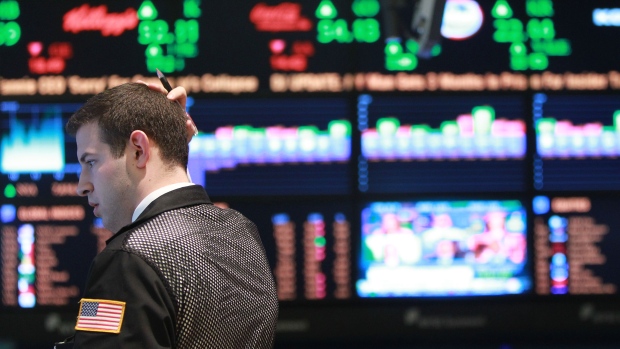Jun 13, 2019
A Recession Signal Is Hidden in U.S. Bond History
, Bloomberg News

(Bloomberg Opinion) -- It’s easy to sense signs of strain in the U.S. economy: inversion of the yield curve, lackluster jobs data and an escalating trade war with China. It’s more difficult to gauge when a slowdown turns into a recession. Predicting its severity – mild or monstrous? – is even more difficult.
Recent research by the Federal Reserve Bank of St. Louis suggests that real yields on 10-year Treasury bonds are the key to answering this question.
The authors looked at all the postwar recessions that the yield curve had predicted. Then they looked at the 10-year Treasury yield at the moment of inversion – and compared it with the length of the subsequent recession.
At first glance, this revealed nothing: Nominal rates at these critical turning points had no correlation with the economy’s decline. But when they looked at the real interest rate – the ten-year yield minus inflation – they found something else altogether.
Lower real rates for 10-year Treasuries at the onset of a recession tracked with worse downturns, both in terms of duration and unemployment.
Explaining the connection is another matter. While it’s tempting to read this as a causal relationship, the researchers speculate that lower real rates are simply a sign that the prospects for future growth aren’t great. As they put it, “Low levels of real interest rates capture early warnings of future slowdown in economic growth.”
This makes considerable sense if you think about the past ten years. Yes, the economy made a recovery, but only through staggering levels of intervention via a zero interest rate policy. For all the talk about the duration of the ongoing recovery, the fact that short- or long-term interest rates haven’t bumped higher is a symptom of a deeper malaise.
To put our current situation in perspective, look closely at the graphs. Those recessions with the biggest spikes were pretty bad: The three clustered on the left – 1956, 1978, and 2006 – have all been defined by wrenching increases in unemployment (as much as 4.5 percent). They also lasted much longer than garden-variety recessions.
Now consider that the current “real” level of the 10-year yield – a pathetic 0.35% – would sit far to the left of all the older recessions plotted on the graph. If the pattern holds – the lower the 10-year yield, the worse the resulting recession – the coming spike would be the biggest by far.
That possibility may seem remote, given that investors have apparently decided that it’s safe to dive back in the water: Thanks to a week-long rally, the major indexes are approaching all-time highs.
But the 10-year yield suggests we should be worried about what lurks beneath the surface. If a recession is in the offing, there’s a good chance it could be fiercer than anyone expects.
If so, those researchers are gonna need a bigger graph.
To contact the author of this story: Stephen Mihm at smihm1@bloomberg.net
To contact the editor responsible for this story: Mike Nizza at mnizza3@bloomberg.net
This column does not necessarily reflect the opinion of the editorial board or Bloomberg LP and its owners.
Stephen Mihm, an associate professor of history at the University of Georgia, is a contributor to Bloomberg Opinion.
©2019 Bloomberg L.P.